Over the past year, many of us have turned to houseplants for our fix of nature. You may be beginners to the world of houseplants, or perhaps you're looking to expand your knowledge and to keep your houseplants as happy and healthy as possible.
From the basics of choosing the best houseplants for your home and easy care tips for your plants, to buying houseplants online, cat-friendly houseplants and common houseplant problems, our ultimate guide will help you grow houseplants successfully in your home.

What are the benefits of houseplants?
Why is it good to grow houseplants in your home? First and foremost, houseplants are good for your health. The simple act of caring for them gets you up and moving and the reward of nurturing a plant and watching it grow makes you feel happy.

Scientific research suggests that having houseplants in your home can improve both our psychological and physical health. The presence of indoor plants has been shown to reduce stress levels, heighten mood and improve attention span. They can also increase our productivity when it comes to working. Physically, surrounding yourself with houseplants can reduce blood pressure, fatigue and even headaches.
Another benefit of houseplants is, simply, that they look attractive and can add depth and colour to a room.
Best houseplants to grow in the UK
Even in the UK, with our warm summers and cold winters, there is a huge range of houseplants that can grow healthy and happily in our homes. Our list includes houseplants that are easy to grow and often available in UK garden centres, supermarkets and DIY stores, as well as online, making them the perfect indoor plants for beginners.
Peace lily
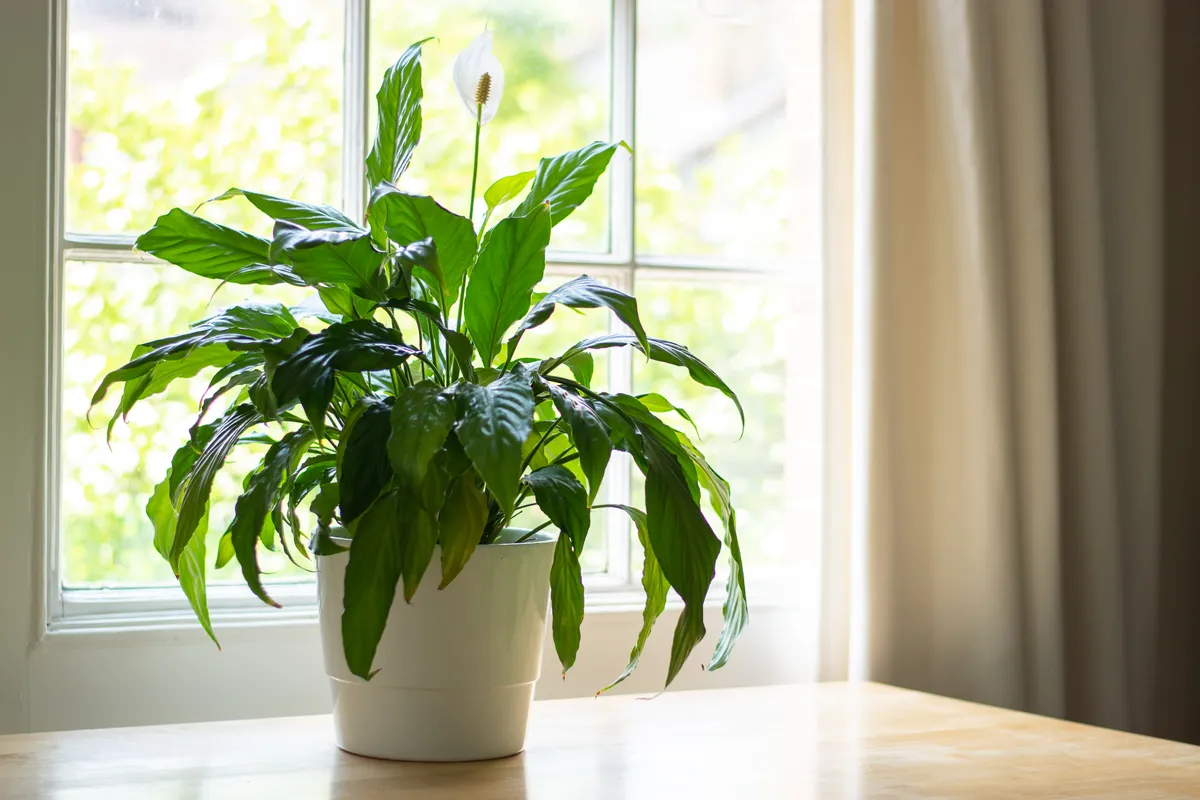
Peace lily plants offer thick, deep-green foliage that can grown almost half a metre tall, with strong white flowers, making them a great plant for interiors.
They like moderate to bright, indirect light but can adapt to lower light levels. Allow the top of the soil to dry out slightly between watering, though the bulk of the soil should be kept moist at all times – if your peace lily needs water, it will let you know by drooping its leaves. Perfers warm rooms (18-24°C) but can survive in colder temperatures (down to 12°C), making it a good plant for cooler homes in the UK.
If happy, peace lilies have a long flowering season (at least six months of the year). Remove the flowers at the base as they begin to fade. Plants benefit from moderate to high levels of humidity, making bathrooms a good home. Regardless of position, mist regularly.
Devil's ivy
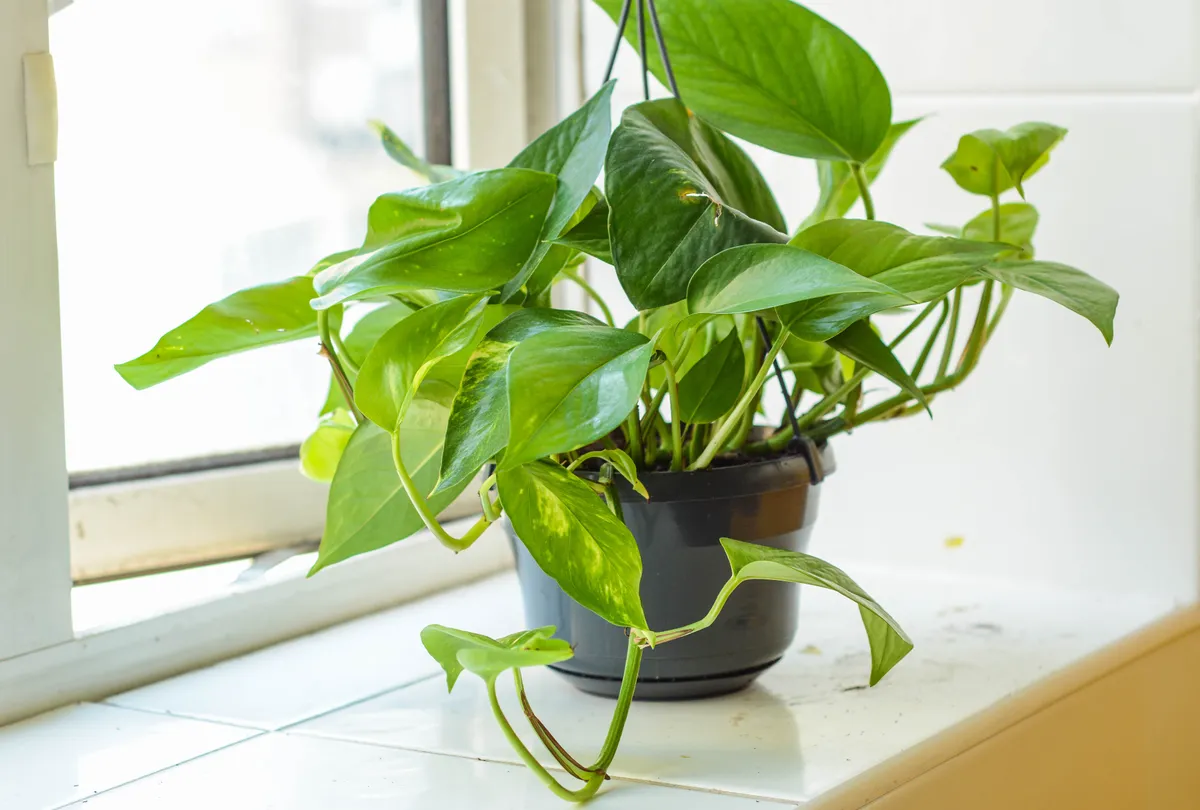
Also known as golden pothos, devil's ivy is an excellent hanging houseplant, but can also be grown up an indoor trellis or horizontally along walls (with support). Their medium-sized, deep-green, glossy leaves grow densely and quickly, making them affective plants for filling dead spaces or softening corners. Some have cream or yellow stripes, adding further interest.
Devil's ivy enjoys moderate levels of light but can tolerate lower levels, too. Water semi-regularly, allowing the soil to dry out slightly – these plants are quite forgiving when it comes to drought, so if you miss a watering, don't worry too much (overwatering will kill the plant). Devil's ivy is comfortable in a wide range of temperatures, from 10-24°C, and enjoys humid environments, although this isn't essential.
Cuttings can be taken easily by clipping just above a node (assuming the stem is growing downwards), which can then be placed in a glass of water to take root. Pinching out the tips and taking cuttings also makes the plant bushier.
Boston fern

The Boston fern is a regal, show-stopper houseplant that immediately draws your attention as you enter the room. Also known as the sword fern, its light-green, frilly leaves sprout upwards from the main root-ball before arching back towards the ground, making them perfect for hanging baskets (if hanging from the ceiling, make sure the hock is installed firmly). With such an abundance of foliage, Boston ferns bring a sense of tranquility to a room and are thought to be one of the best plants for purifying the air.
Boston ferns enjoy medium levels of light away from direct sunlight (this burns the leaves). If placing them along the edge of a room, ensure there is a gap between the plant and the wall - this will keep it healthy on all sides. The soil should never dry out - these are thirsty plants and should be watered regularly. Like most houseplants, ferns don't like draughts and are at their happiest in temperatures between 16-24°C. They prefer high humidity levels and should be kept away from fires and radiators.
Spider plant
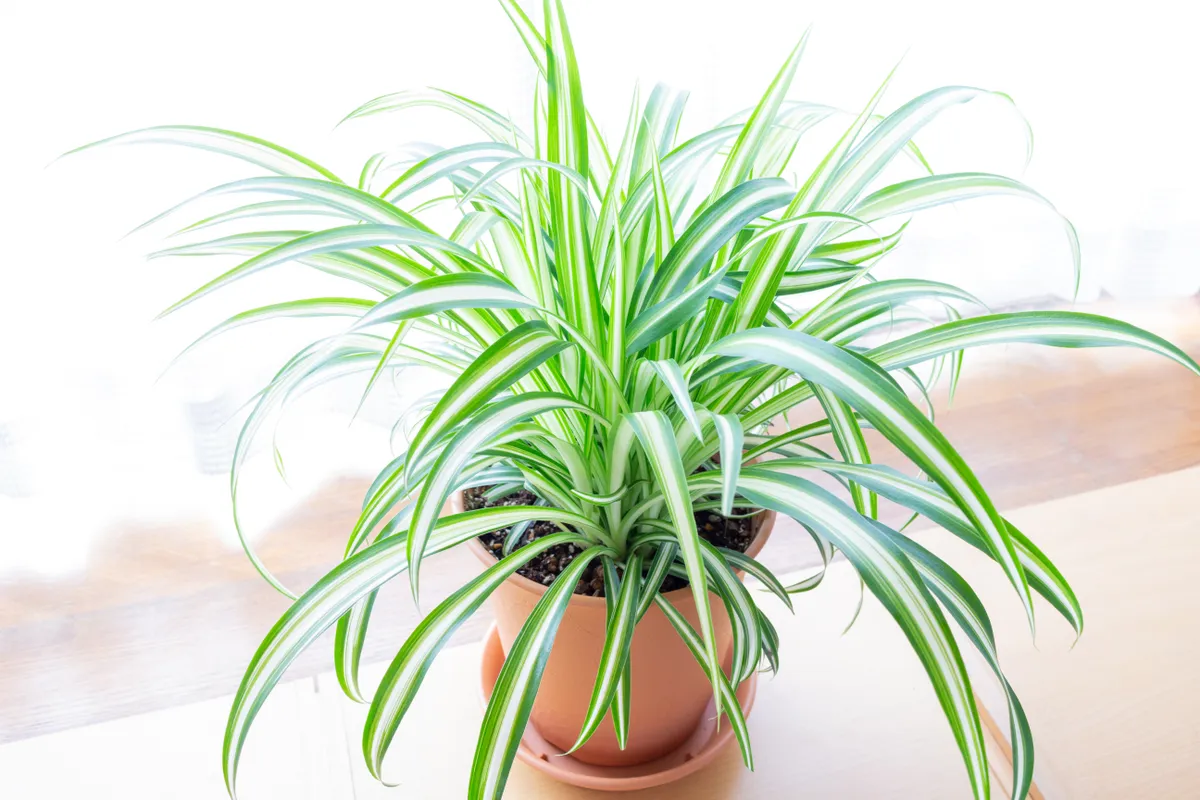
There are a number of different varieties of spider plant, all of which present the classic long, variegated leaves (colour tones, curl and thickness vary). Difficult to kill with a cheery character and the endearing ability to produce tiny white flowers, and then 'spider babies', these are a favourite in British homes. They range in size from small to medium and can be placed in a variety of locations from desks and shelves to ceiling hangers and living walls.
Spider plants like bright spaces away from direct sunlight and should be watered regularly through spring and summer, keeping the soil slightly damp. Reduce watering as the room temperature drops in winter. Spiders are one of the hardier houseplants and can survive temperatures as low as 8°C, though they will grow with far more verve in warmer rooms (16–24°C).
Rubber plant

The thick, board, glossy leaves of the rubber plant add an exotic – and retro – feel to any room. There are a number of different varieties, some with deep-purple leaves and others with lighter, lusher tones. Rubber plants can grow up to 2m tall, making them good floor plants.
Although most rubber plants prefer bright, indirect light, they can grow happily – if rather slowly – in low-light spots, too. Water when the top layer of the soil begins to dry, keeping the under layers moist at all times. If the leaves begin to drop off, it's likely that you're over-watering. Rubber plants prefer temperatures between 16–24°C and do well in both humid and dryer spots.
Swiss cheese plant
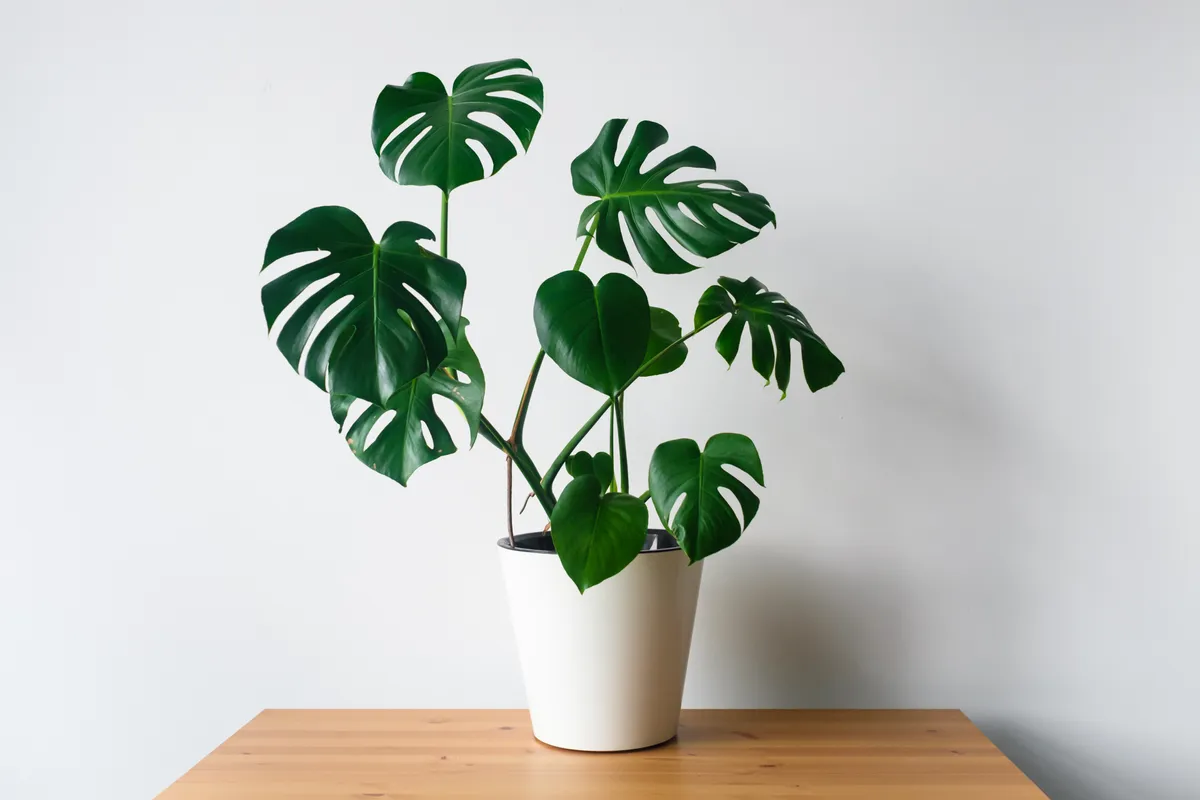
The Swiss cheese plant is one of a number of species of monstera. With huge, holey leaves, it's easy to see where its common name came from. They are another high-impact houseplant, growing ginormous if given the right to roam. If placed alongside a strong structure, such as a moss pole, they can climb right to the ceiling, using their aerial roots for support.
Generally easy to care for, Swiss cheese plants like warm rooms, preferably 18–27°C, but can handle temperatures as low as 12°C). They like bright spots (though they can put up with low light levels) away from direct sunlight. Do not overwater, but hydrate once the top layer of soil dries out. They love high humidity levels (mist regularly) and struggle in dry positions.
Calathea

There are numerous varieties of calathea, all of which boast mesmerising leaf colours – from deep-purple to light-green – and patterns, adding a tropical charm to your living space. Place among other houseplants and their colours will really pop.
Calatheas enjoy plenty of light (not direct). If they are left in a shady spot, their leaves will fade and the all-round health of the plant is more likely to suffer. Keep the soil damp at all times, but not waterlogged, and place in a warm spot (18-23°C) with high humidity – remember, these are tropical plants, so the more you can mimic their natural environment, the happier they will be.
Yucca

Dracaenas, such as yuccas, are a staple houseplant when it comes to UK homes. You'll find them in almost all plant shops and they are pretty easy to keep alive. They grow slowly, but their thick, rough trunks can reach heights of up to 2m – couple this with their long, pointy leaves and you're treated to a really wonderful space-filling plant, with high-impact value.
Yuccas grow best in light, bright spots in direct sunlight and should be watered semi-regularly, allowing the surface of the soil to dry out a bit. Tolerant to most indoor room temperatures in the UK, but prefers 18–24°C.
Weeping fig
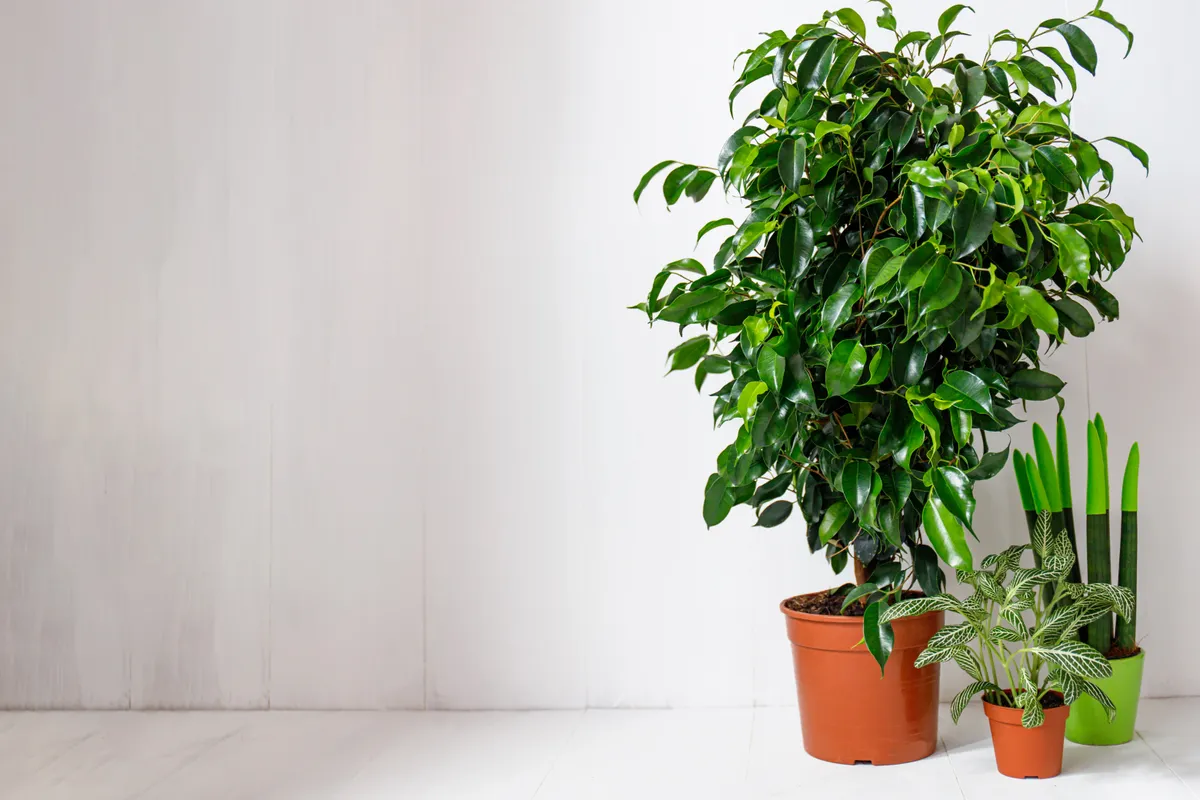
Also known as the weeping fig, ficus benjamina is a deep-green, tree-like houseplant that can be used to add height to a room, or to create a backdrop for other more delicate plants. This low-maintenance houseplant can tolerate a bit of shade but prefers bright rooms with indirect light. Water when the soil begins to feel dry and keep away from draughts. Prefers temperatures between 16–24°C. It drops its leaves when it's unhappy, which could be a sign that you are overwatering.
The plant can be pruned back when necessary (will grow to the ceiling if the pot and support allows), but growers must be aware that, when cut, the plant secrets a liquid that can be an irritant, so wash your hands once you're done.
Wandering dude

Tradescantia zebrina, more commonly known as wandering dude (previously wandering jew) is a member of the stitchwort family. Its striped purple and green leaves have a silver sheen that sparkles in bright rooms. Left to its own accord, wandering dude will grow long stems that hang, trail and climb, making it a versatile houseplant.
The plant is extremely fast growing and one of the easiest to take cuttings from. Simply snip the stem just below a node, remove the lower leaves and plant directly into moist soil. Pinching out the tips encourages the plant to grow bushier.
Best houseplants for beginners
You may be after indoors plants that require as little care as possible but still look attractive.
There are a number of plants that thrive off neglect. Aloe vera and cacti require very little watering and are easy to keep alive. Yucca and devil's ivy are also a good option for beginners, as they require little more than a bit of water from time to time. The ZZ plant, or Zanzibar gem is another beginner's favourite as it tends to survive even when forgotten for a few weeks.

How to propagate/take cuttings from your houseplants
One of the most rewarding things you can do as a houseplant gardener is propagate your existing plants. It's surprisingly easy to do, and even if it doesn't work out first time, your mother plant will be just as healthy as it was to begin with, if not healthier – lots of houseplants benefit from a trim back every now and then.
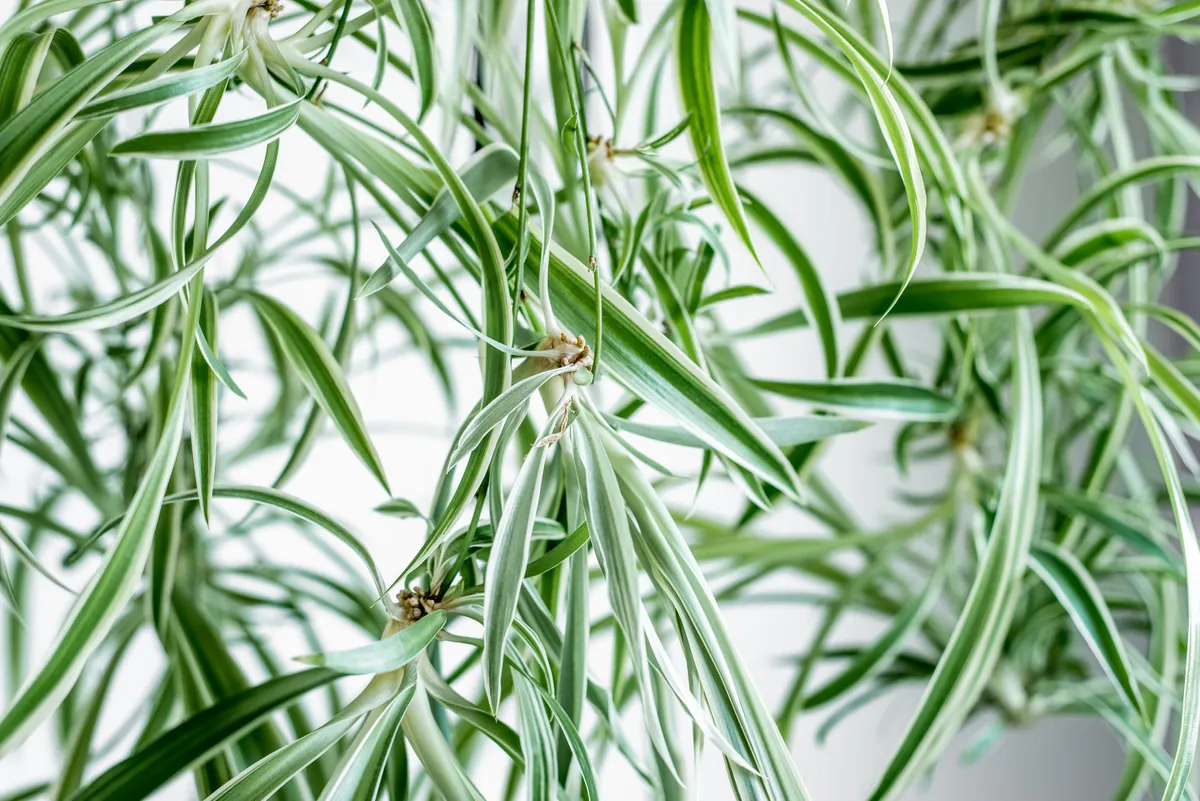
Propagating techniques vary depending on the plant variety. Here are a couple of examples to get your started.
How to propagate spider plants
If your spider plant is healthy, it will send out long leafless tendrils. These soon bloom with small white flowers before producing dozens of tiny 'baby spiders'. After a few months, small root nodules will appear at the base of the offspring. Snip the tendril just above the 'baby spider' and press your cutting down into damp compost. The plants will self-root. Spider babies will also develop roots if place in a glass of water, root-side down.
How to propagate wandering dude
Tradescantia zebrina, or wandering dude, is one of the easiest houseplants to take cuttings from. Cut the stem just below a node (if the stem is growing upwards), then remove the lower leaves from your cutting, leaving just two or three at the top. Make a hole in some damp compost with a pencil and drop the stem inside, patting the soil down around it.
Where to buy houseplants online
When possible, it's best to buy houseplants from your local garden centre or supermarket, allowing you to assess the colour, shape and size of the plants firsthand. An alternative is to buy your houseplants online. Companies such as Crocus, Dobies, Hortology, House Plant and Primrose offer houseplant delivery services, as well as advice on how to care for your plants. Our sister publication Gardens Illustrated has a comprehensive list of the best places to buy plants online.
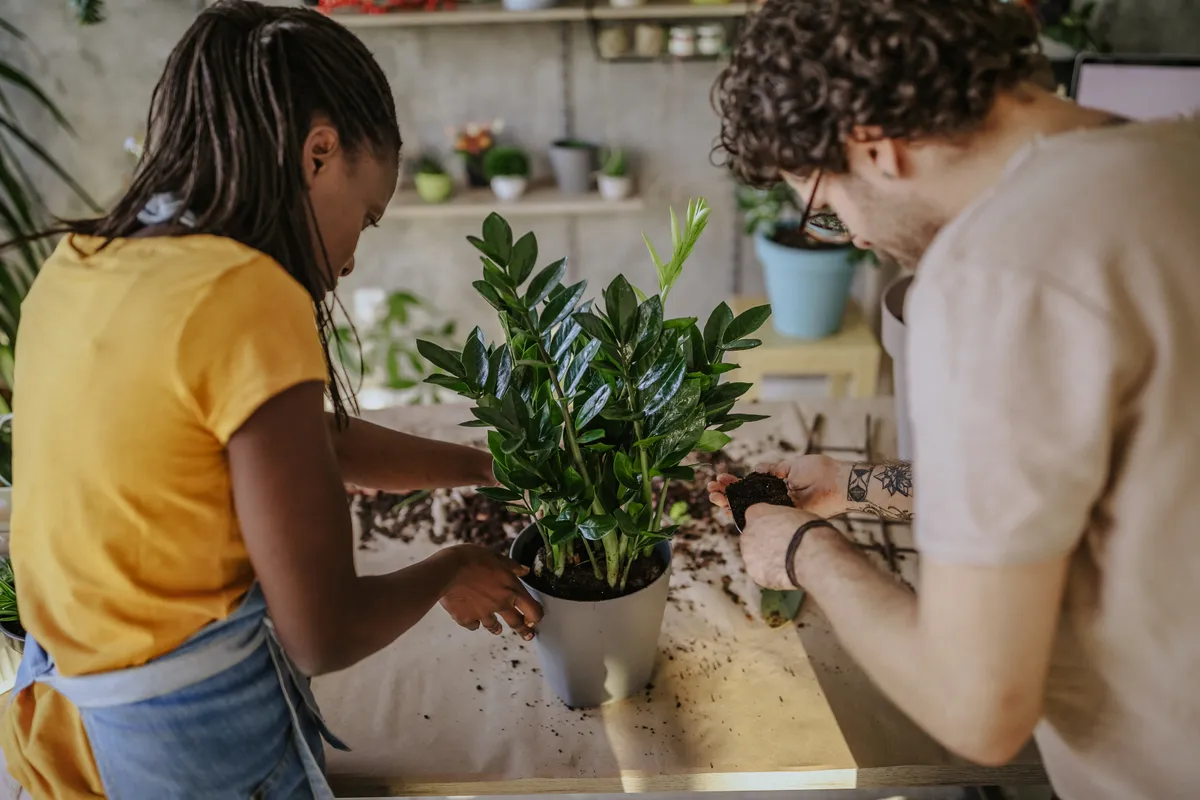
How to make a macramé plant hanger
Macramé hangers are perfect for plants such as wandering dude, devil's ivy, string of hearts and Boston fern. There are lots of different patterns for making macramé hangers, but if you're looking to keep things super simple, our easy step by step guide to making a macramé plant hanger will be just for you.
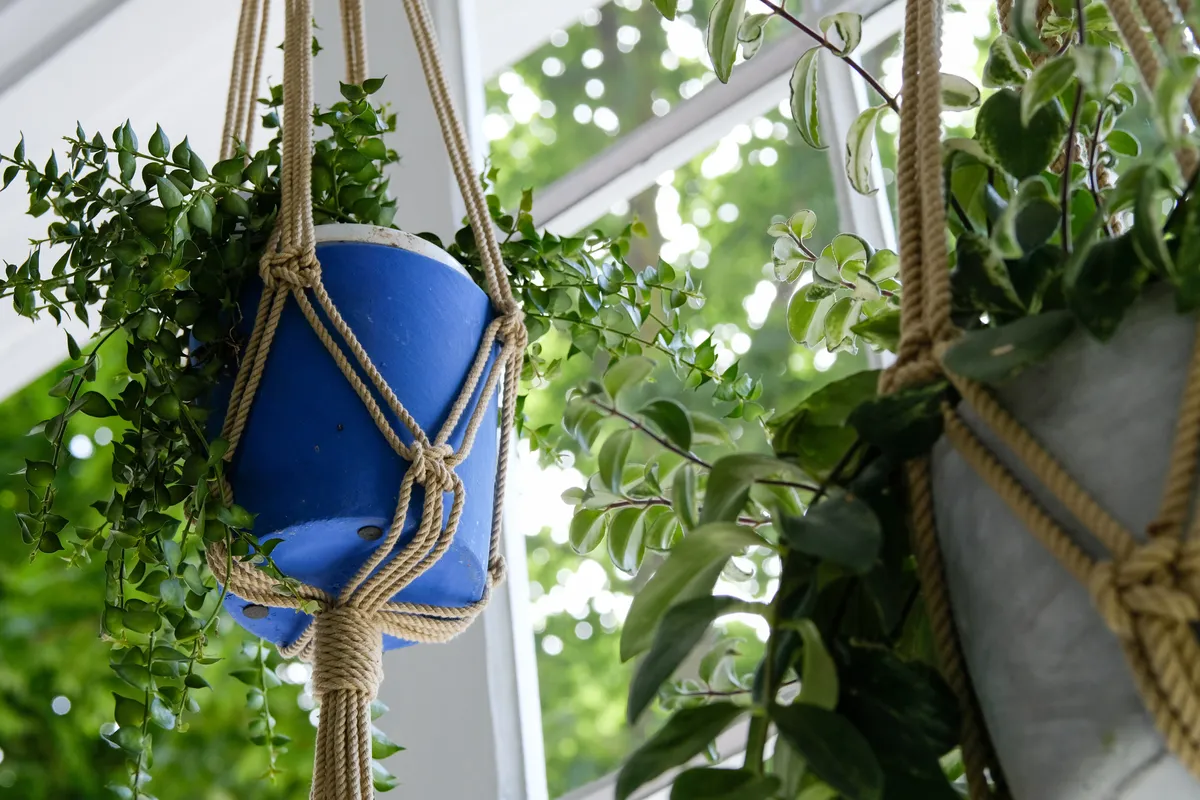
Houseplants that are safe for cats
Cats seem to take great satisfaction in eating carefully cared for houseplants. Not only is this bad for the plants, but many contain toxins that are poisonous to cats.
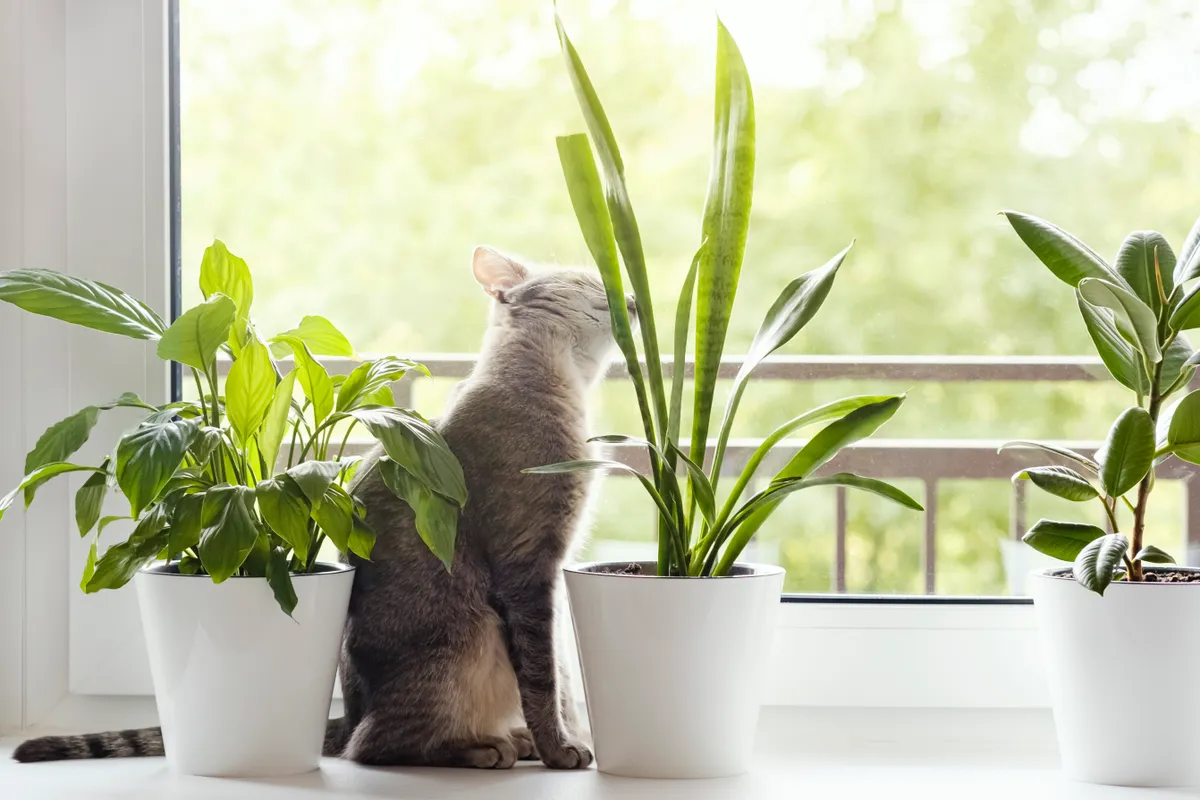
Here are a few houseplant varieties that are safe for cats.
- Spider plant
- Boston fern
- Calathea
- Orchid
- Bromeliad
- Areca palm
- Venus flytrap
- Staghorn fern
- Prayer plant
- Money tree
How to look after houseplants – and not kill them!
All houseplants require slightly different conditions to remain healthy, and therefore care varies from plant to plant. Perhaps the best way to approach houseplant care is to work through a checklist with each specific plant.

Light levels
Most houseplants like bright spots away from direct sunlight. There are exceptions, of course, such as geraniums, which benefit greatly from direct sunlight. At the other end of the spectrum, some indoor plants can grow happily in low-light spots, such as ficus and rubber plants, though this usually slows their growth.
If your houseplant looks unhappy, move it to another spot with different light levels. Sometimes it's a case of trial and error and may take a few moves before your plant finds a spot it's comfortable in.
Temperature
Generally speaking, houseplants that are bought in the UK grow best in temperatures between 16–24°C, so try to keep them in rooms that don't get too cold over winter, away from draughts. Some can survive cooler temperatures in the winter, down to 10°C, but growth will slow significantly.
How often should you water houseplants?
Needless to say, the amount of water you give your houseplants dictates their health dramatically. Some like to be almost constantly damp, such as calatheas, though houseplants should never be completely waterlogged. Other houseplants, such as cacti and aloe vera, like to dry out completely between light waterings.
Regardless of how much watering is require, pretty much all houseplants benefit from misting.
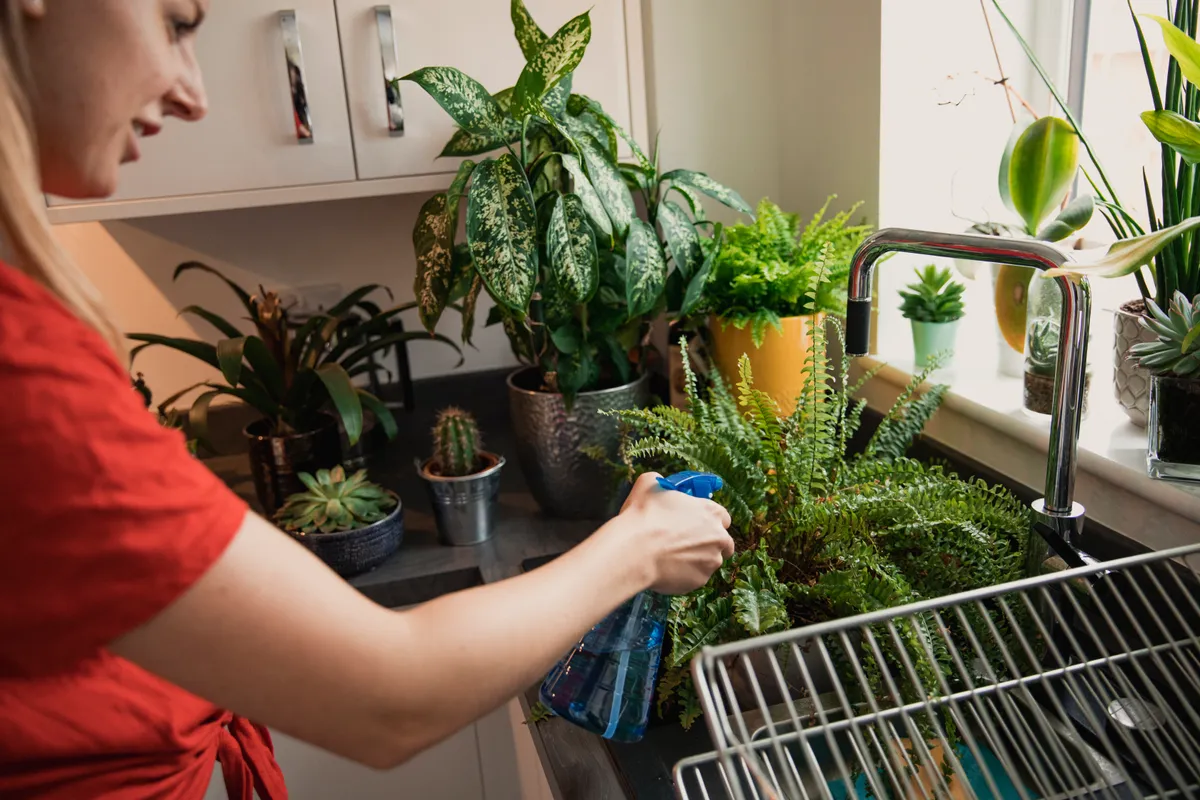
Humidity
Most houseplants bought in the UK aren't native and generally come from hotter and more humid environments such as South America. If possible, it's a good idea to place houseplants in bathrooms and near kitchens, where the air is more humid. But don't worry, this isn't essential - misting and temperature control is a good compromise.
Cutting back
Should you leave your houseplants to grow as they please? Is some cases, yes, but many varieties actually benefit from a trim every now and then. Pinching out the tips of wandering dude and devil's ivy make the plants grow bushier, while cutting back the trunks of yuccas every few years can stop them growing leggy.

Should you feed houseplants?
With the exception of a few varieties, houseplants can survive without plant food. That said, giving them a little liquid fertiliser from time to time during the growing season will take them to the next level, giving your plants a boost.
Type of growth
Before finding a spot for your houseplant, consider what type of growth you're likely to get. If it's a tall plant with large foliage, you'll want to find a spot where it can stretch out. If it's a trailing or hanging plant, you might want to consider hanging it from the ceiling.
